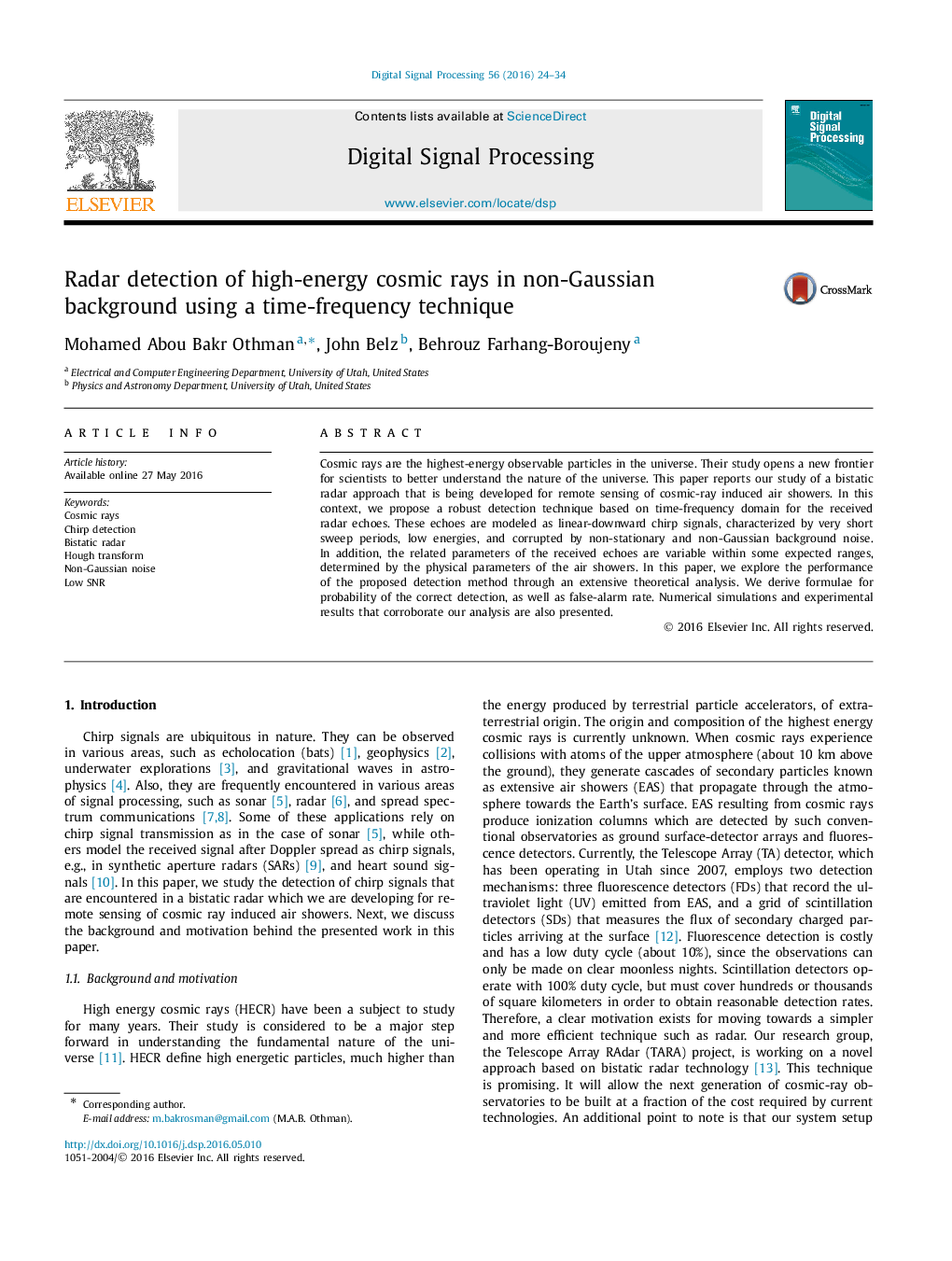| Article ID | Journal | Published Year | Pages | File Type |
|---|---|---|---|---|
| 560059 | Digital Signal Processing | 2016 | 11 Pages |
Cosmic rays are the highest-energy observable particles in the universe. Their study opens a new frontier for scientists to better understand the nature of the universe. This paper reports our study of a bistatic radar approach that is being developed for remote sensing of cosmic-ray induced air showers. In this context, we propose a robust detection technique based on time-frequency domain for the received radar echoes. These echoes are modeled as linear-downward chirp signals, characterized by very short sweep periods, low energies, and corrupted by non-stationary and non-Gaussian background noise. In addition, the related parameters of the received echoes are variable within some expected ranges, determined by the physical parameters of the air showers. In this paper, we explore the performance of the proposed detection method through an extensive theoretical analysis. We derive formulae for probability of the correct detection, as well as false-alarm rate. Numerical simulations and experimental results that corroborate our analysis are also presented.
